





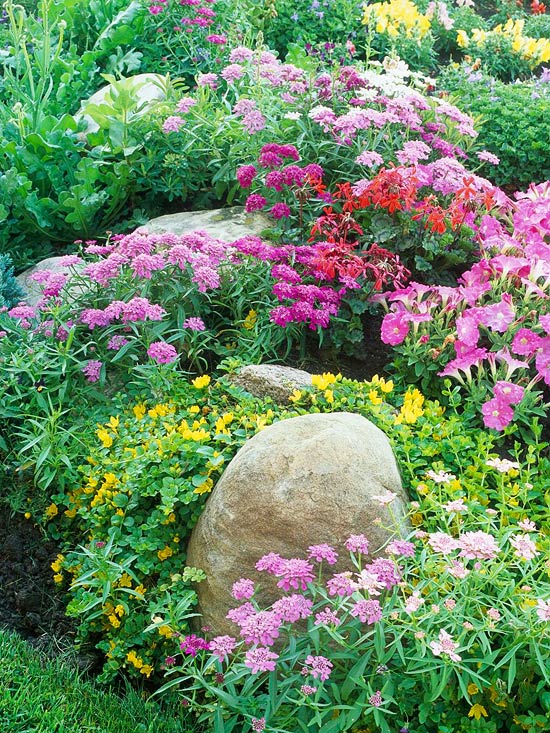
While formal gardens thrive on order and well-defined spaces, cottage gardens bubble in cheerful tangles of flowers that form a kaleidoscope of hue and texture.
"Cottage garden style is relaxed, colorful, and fun," says Darrell Trout, avid gardener, writer, and lecturer, whose own garden reflects his passion for easy-growing beauty.
"A cottage garden has perhaps less regard for rules than for doing what you really love," he says. Follow this step-by-step advice to cultivate your own corner of delightful floral abundance.
Click here to find out how to use a stone-bordered raised bed to enhance your cottage garden.
continue reading below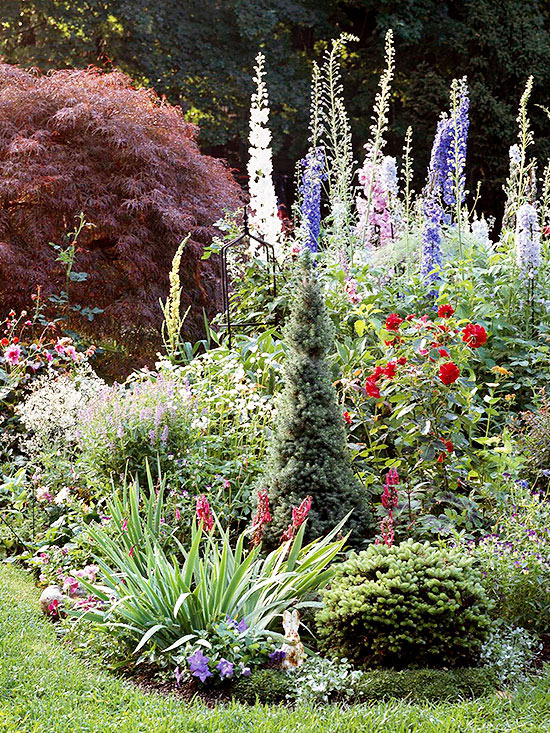
1. Start small. "Don't create a monster that you don't have time to feed regularly," Trout says. "Keep your cottage garden small, and most of all, fun." Over time, as your confidence grows, increase the size.
2. Invest in soil. "Starting with good, rich, organic soil where plants will thrive with a minimum of watering and fertilizing cuts the work from the start," Trout says. He also recommends doing a soil test to learn the type of soil you have. Add organic matter yearly, either by purchasing compost or making your own.
3. Position plants carefully. Much work in a garden comes from not having the right plant in the right place. As you gain gardening experience, you can push the envelope, Trout says. "But the healthiest plants -- ones that need less care -- are those that are in ideal conditions," he adds.
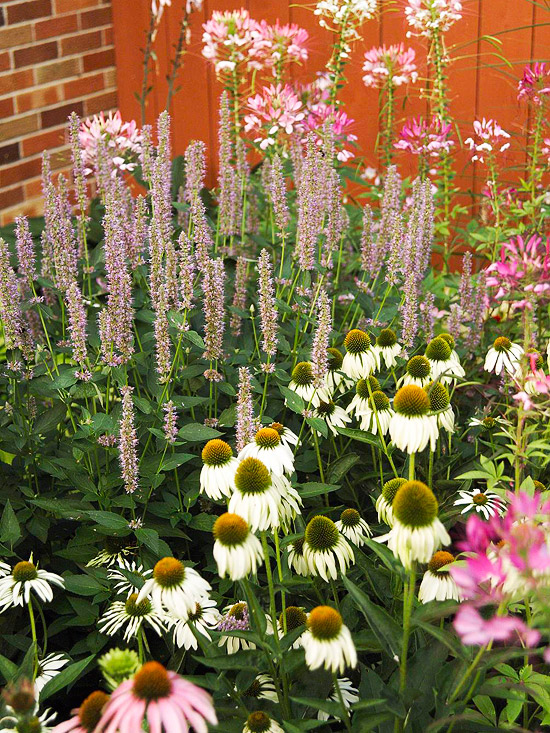
4. Select sturdy beauties. "Choose high-performance, almost bulletproof plants," Trout says. "There is no absolutely right way or wrong way to create a cottage garden, so choose what you love."
Some of Trout's favorite plants include spring-flowering bulbs, purple coneflower (Echinacea purpurea), wild indigo (Baptisia australis), 'Stella d'Oro' or 'Happy Returns' daylily (Hemerocallis), New England aster (Aster novae-angliae 'Alma Potschke'), and Russian sage (Perovskia atriplicifolia 'Blue Spire').
For foliage interest, try lady's mantle (Alchemilla mollis), lambs' ears (Stachys byzantina 'Helene Von Stein'), or blue fescue (Festuca glauca). Avoid high-maintenance roses. Trout suggests growing tough, disease-resistant Knock Out shrub roses, Meidiland landscape roses, 'Betty Prior' (a floribunda rose), or the old-fashioned climber 'Blaze'.
5. Cover soil. "Mulching helps maintain soil moisture levels and prevents weeds from growing," Trout says. "As organic mulch (bark, compost, or leaf mold) breaks down, it improves soil. Mulch also gives the garden a neater, more unified look."
6. Make it automatic. Trade dragging a hose around for hands-free watering. "I like drip hoses, as it's easy to put the water exactly where you want it -- and not on the foliage or flowers," Trout says. "It's also more environmentally correct: Less water evaporates into the air."
Get more design tips for cottage gardens.
18 must-have plants for a cottage garden.
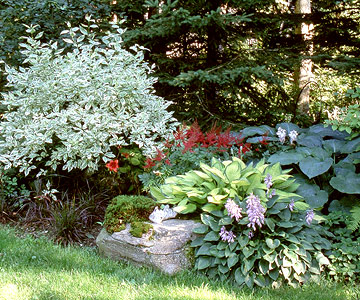
Rely on hardscaping. Boulders, laid out in natural-looking formations and dug one-third of the way into the soil, are good year-round anchors that complement their flower companions. In addition, a picket or rustic fence makes a fitting backdrop to a cottage garden, adding order to the visual chaos of mixed plantings.
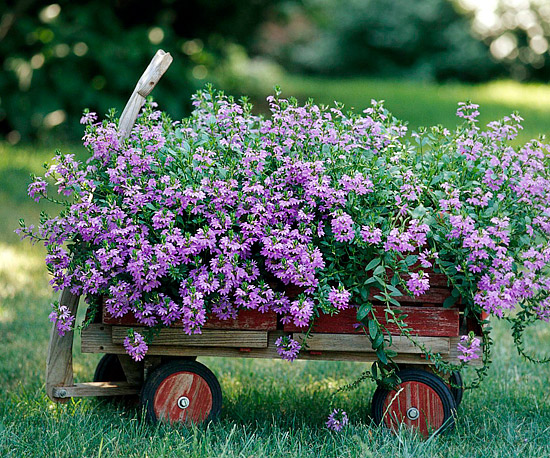
Add a fun accessory. It provides a convenient focal point, and, if you use it as a planter, a stage for plants so they're not lost among their peers. Old wagons, fertilizer spreaders, bins, and baskets make good additions. Use them in moderation to avoid a junkyard effect.
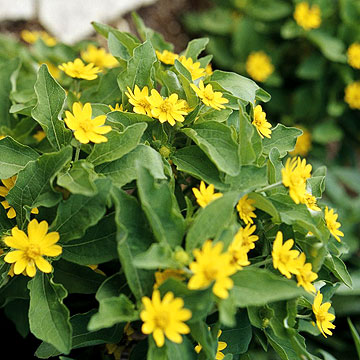
Use long-lasting annuals. Melampodium blooms all summer without any coddling. Love-in-a-mist (Nigella) can't match melampodium's length of bloom, but it offers ornamental seedpods that last into winter. Love-in-a-mist also reseeds itself without becoming a pest, making your job easier.
Plant these shade-loving annuals.
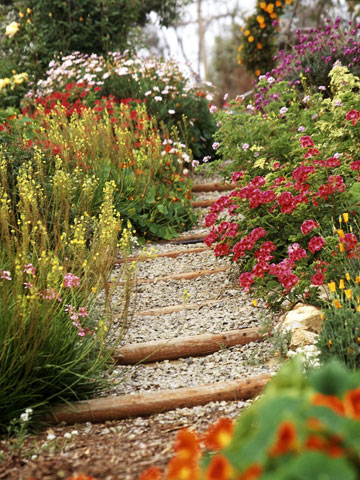
Make a path through the garden. Paths offer visual relief from crowded plantings. More important, they make the garden more welcoming and easier to maintain. Consider who will be walking through the garden and in what kind of shoes. This will help you decide whether to go with a soft surface such as gravel or wood chips, or a firm surface such as concrete. A grass path is an easy alternative where foot traffic is low, but it will require regular mowing.
Get more ideas for garden paths.
Copyright © www.100flowers.win Botanic Garden All Rights Reserved